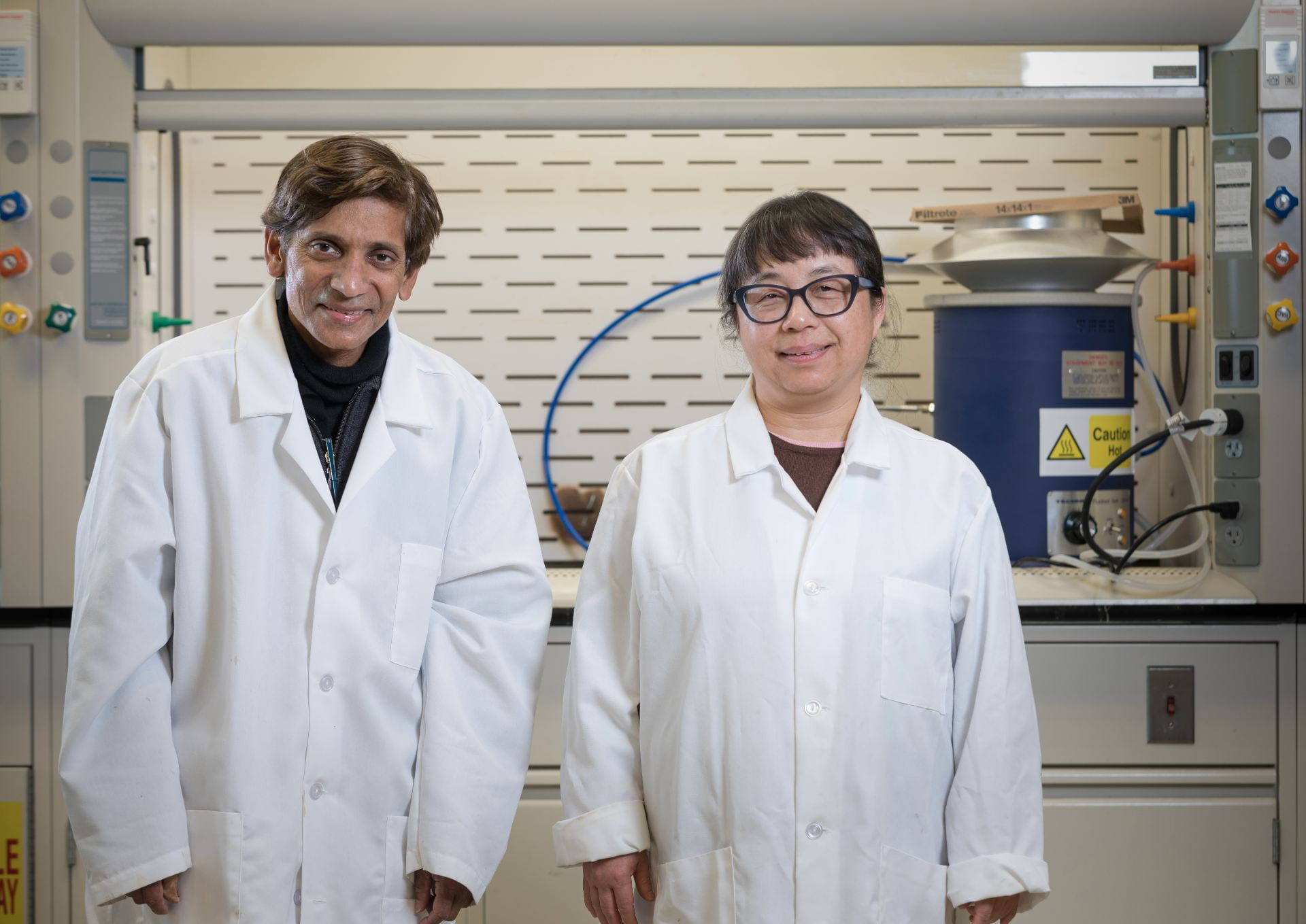Membrane Research Moves Forward with Additional Five Years of NSF funding

The MAST Center is focused on developing advanced membrane technologies to address global issues such as water recycling, cost effective purification operations processes for biopharmaceutical therapeutics/biologics, as well as membranes for safe and cost-effective production of food and beverages.
In addition to the U of A, the MAST Center has three other sites: the University of Colorado Boulder, the New Jersey Institute of Technology and Pennsylvania State University.
Ranil Wickramasinghe, a U of A Distinguished Professor of chemical engineering, has been director of the MAST Center since 2017 and oversees all four sites. Xianghong Qian, professor of biomedical engineering, is co-site director along with Wickramasinghe.
Wickramasinghe’s team focuses on water treatment, wastewater recovery and reuse, and bioseparations for the manufacture of biopharmaceuticals. The center’s expertise in membrane separations enhances its research mission with emphasis on industry participation.
Wickramasinghe answered a few questions about the latest funding in a recent interview:
Q: Can you explain the U of A’s role in the MAST Center?
RW: The University of Arkansas manages the entire four-campus Membrane Applications, Science and Technology, or MAST, Center. This is the only NSF industry-university cooperative research center focused on membrane science and technology in the country. We manage it from an administrative perspective, including relationships with our sponsors. Our funding comes from industrial sponsors, and we currently have close to 20. All of the money comes into us, and then we fund projects between the four campuses, so organization is very important. The infrastructure is very important. Then we have specific research areas, and these are focused on biotechnology; water treatment; membrane fundamentals, such as membrane formation, modification, characterization, as well as membranes for food and beverage applications; and green technologies for membrane manufacture.
Q: What did the last round of funding, in 2018, enable MAST to do?
RW: It basically put us in position to get Phase III funding. Firstly, we increased our research portfolio into the areas that I just mentioned. We also increased our sponsorship. We implemented a number of procedures that made us very responsive to industry needs, and that is what we are all about — giving value to all our stakeholders, one group being our industrial sponsors. We also have a number of students now working for our sponsors. So it’s a very good link that we have developed.
The other important aspect of the MAST Center is our focus on workforce development. We have worked closely with NorthWest Arkansas Community College. There is a developing biotech industry in Northwest Arkansas, and there is a real need for trained associates. We are trying to help NWACC develop training programs and focus areas in biotechnology. But more than that, we have, through various supplements, managed to introduce a large number of these students to four-year degree programs. So large numbers have now transferred to the U of A, and some have gone even further and are pursuing master’s degrees. We are also working with the Upward Bound program on campus to provide research opportunities for rising seniors — again, introducing them to careers in biotechnology.
Q: What will the latest round of funding enable you to do?
RW: There are a few things we are going to do. Firstly, this is our last round of NSF funding. We intend to become a graduated center. Many centers actually don’t make it to graduated status when NSF funding disappears. We are working very hard towards getting a sustainability plan implemented. We have five years to do that, and we are working with our industry sponsors to ensure that we are developing a center that will meet the needs of industry in five years and beyond. We are also working closely with NorthWest Arkansas Community College. We are trying to set up a regional hub for research experiences and mentoring, and so it will not just be NWACC, but also other community colleges in Little Rock and the area around here. The focus is to try and help with workforce development and with training students to work in a developing biotech industry.
Q: Can you talk about MAST’s relationship with your sponsors?
RW: Yes, the IUCRC program is very collaborative on a number of levels. First, we have universities collaborating with each other. We collaborate with colleagues at Penn State. We have had collaborative projects with the NJIT as well. Students from different campuses work together with our industrial sponsors. Students also have opportunities to do industrial internships with our sponsors.
But the sponsors also collaborate with us and with each other. You have many biotech companies out there. If you look at the website, many of our industrial sponsors are competitors in the marketplace. But at the MAST Center, they work on problems that are of joint interest. The whole center research program is managed in order to work on industrially relevant research projects that are of interest to the entire industry and will help bring about technological advances and train the workforce for the future.
The relationship with our sponsors is important because we really have to provide a positive value proposition that is often multifaceted. We work on industrially relevant research, that NSF calls “precompetitive” in that the aim is not for one company to outcompete its competitor. These are projects that most of our sponsors probably would not have time to work on in-house. Our sponsors also benefit from the fact that they can hire our students.

